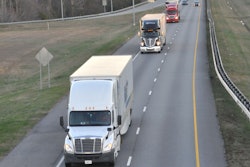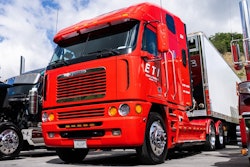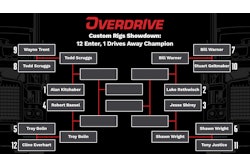
“We recruit enough new drivers, maybe we recruit so many that they have become disposable. In essence, we have been turning up the faucet without closing the drain. Finding innovative ways to increase efficiency will help. It goes beyond that. We have to find ways to keep drivers wanting to stay, so we can succeed in our industry and you get your shipment on time.” —Trucker Jeff Clark, writing on the website of TV and radio host and writer Michael Smerconish
The news yesterday of longtime carrier pay-package analyst Gordon Klemp, of the National Transportation Institute, and his presentation at a recent CCJ event around the subject of driver pay, rung several familiar notes, particularly those relative to what carriers named the biggest issue in the trucking industry recently: the “driver shortage.” (Yeah, I can’t get enough of the scare quotes around the phrase, not to belittle the real issues carriers large and small have when it comes to finding dependable people to pilot their trucks at pay rates they’re offering.) While it’s not all about pay, as I know Klemp would acknowledge — and Jeff Clark’s excellent piece about the “shortage” at Smerconish.com, well worth a read, makes it explicit — the boost in the average pay package offered by carriers in the last year Klemp identified as the strongest on record. He also predicted it would continue, but offered a counterpoint that is very similar to the contention of Overdrive readers on offer in this post from two weeks ago on Channel 19.

Essentially, as summed up by yours truly: “We have seen some moves in this area (pay), but clearly it’s not been enough.”
Klemp noted that for earning potential to put new luster on the business of trucking, as elucidated in Linda Longton’s report …
Raising pay is necessary, but it will take years, not months, “until we get to a wage number that starts to draw people in who wouldn’t have considered driving in the past,” he says.
Though top drivers will earn between $70,000 and $80,000 this year, “the average overall is not there” to attract new drivers into the industry, Klemp says.
Rates need to be there to support it. As a conversation I had with owner-operator Kenny Capell about his one-truck independent Ahearn Transportation operation yesterday made clear, they’ve been going in the wrong direction in recent months. Capell, hauling in a 2003 Freightliner Columbia pulling a van trailer, was consistently hitting well north of $3/mile in negotiated revenue this time last year and through the winter season on shorter-haul loads mostly out of the Atlanta area into Florida, often enough deadheading back. Now, however, he noted at the end of a similar run, “$2.67 is what I just did,” not uncommon of late.
For drivers running cross-country for per-mile pay, however, Capell gave the example of an owner-operator friend grossing around $1.50/mile plus surcharge. “Of course when you sit there and think about the fuel cost,” Capell said, “it brings me back to B.J. and the Bear making $1.50 a mile in 1978 and paying 80 cents a gallon for fuel. Realistically, we’re still making those older wages.”
Klemp, for his part, however, sees the pay situation for drivers improving over the longer term, urging carriers “to confront as an industry” the reality that “we have a driver supply that’s inelastic.”
In other words, as Clark’s piece well illustrated, shift priority No. 1 from concerns of recruiting to those of making it worth the while of drivers and owner-operators to stick around in the industry. “Driver shortage” has been invoked for too long without a whole lot of evidence in real wage movement to bolster it as a reality, as Clark suggested: “While the industry has been crying wolf for decades about a driver shortage, just like the villagers in Aesop’s fable we don’t believe them anymore.”
As I quoted Clark up top, this should be a significant priority of all parties in the supply chain, and while it’s not all about money, that is no doubt a massive piece of it: “We have to find ways to keep drivers wanting to stay, so we can succeed in our industry and you get your shipment on time.”














